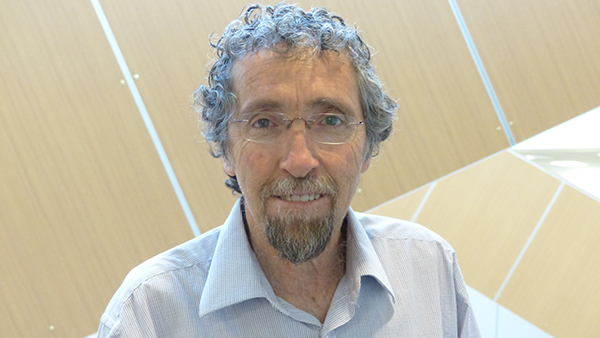
Israel Amirav
As a pediatric pulmonologist in the Department of Pediatrics and in Northern Israel, Israel Amirav knew there was a problem with inhalation masks his patients were using. These standard masks were scaled down versions of adult masks and did not seal properly. Because of this, the medicine administered through the mask would dissipate in the air instead of being delivered to the child.
He heard frustration from his patients' parents in using the mask. "You know doctor, you prescribed this ventilator, but my son does not like it, he's fighting it," they'd say.
Amirav set off to investigate how these masks were created. He found the current models used were based on adult measurements and the only mask that used children's measurements was an airplane oxygen mask developed over 60 years ago. This mask was based on measurements of 30 to 40 children.
Amirav decided the time was right to create a new mask.
"I decided to measure infants' faces and heard about the 3D camera technology the computer science department created at Technion Israel Institute of Technology in Haifa, Israel," said Amirav.
He made a connection and borrowed their camera, went into the local community and took pictures of about 300 children's faces.
Using the 3D technology was a simple process. The camera is portable and each photo took less than a minute. Using the accompanying software, the photos are easily archived and analyzed.
The software measured each child's face by clicking on points of the face of the 3D photo. The children measured were between the ages of 0 to 4 years old. Technion did a cluster analysis and divided the data into three different sizes: small, medium and large.
Using a mathematical process, each child's photo of each cluster size was averaged, producing the three average sizes. These sizes were transferred to the design of the mask. With the patient in mind, Amirav punched a hole in the mask so a pacifier could fit in. This creates an insulation effect in the mask and helps soothe the child in between taking the medicine.
The masks have FDA approval and are awaiting Canadian approval.
Amirav joined the Department of Pediatrics last June. During this short time he has created awareness of Technion's 3D camera. His Technion colleague, Yaron Honen, recently facilitated a Women's and Children's Health Research Institute (WCHRI) workshop on the uses of 3D photography. Enthused faculty from a wide range of disciplines attended.
Word of the camera and its benefits are quickly spreading at the University of Alberta. These cost-effective cameras can be purchased from Technion for scientific or academic purposes and already three pediatric faculty members have cameras: Amirav, Joanna MacLean, and Piush Mandhane. MacLean is using the camera to see if she can predict risk for obstructive sleep apnea. Dentistry is using a camera and the Institute for Reconstructive Sciences in Medicine (iRSM) at the Misercordia Hospital is considering one.
Amirav is happy to see his idea come to life.
"We can now give the mask to the mother to use on the child. They come back to us and say, 'My child takes the medication and sleeps well now, doesn't cough, and is developing well,'" said Amirav.